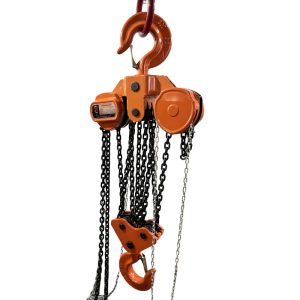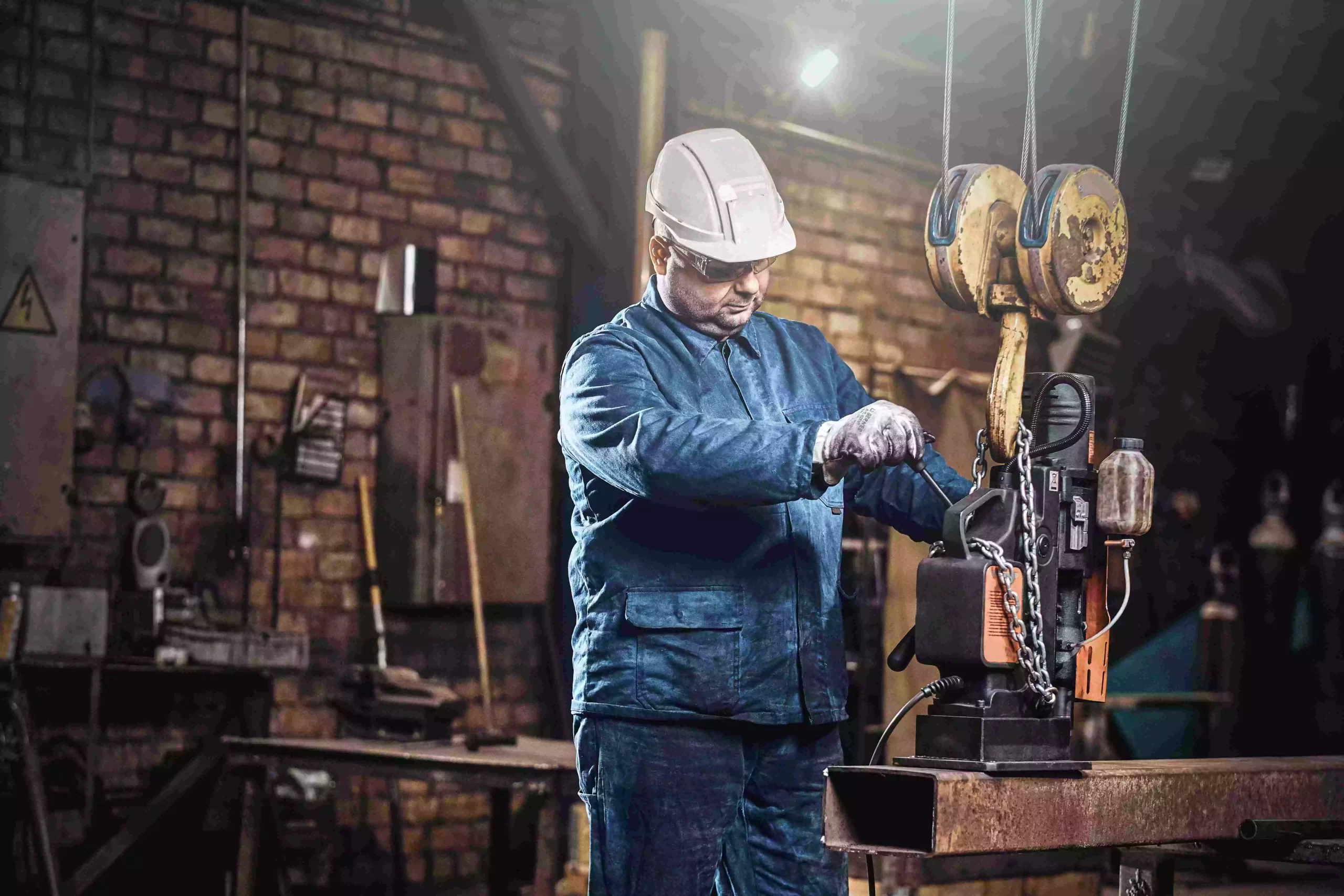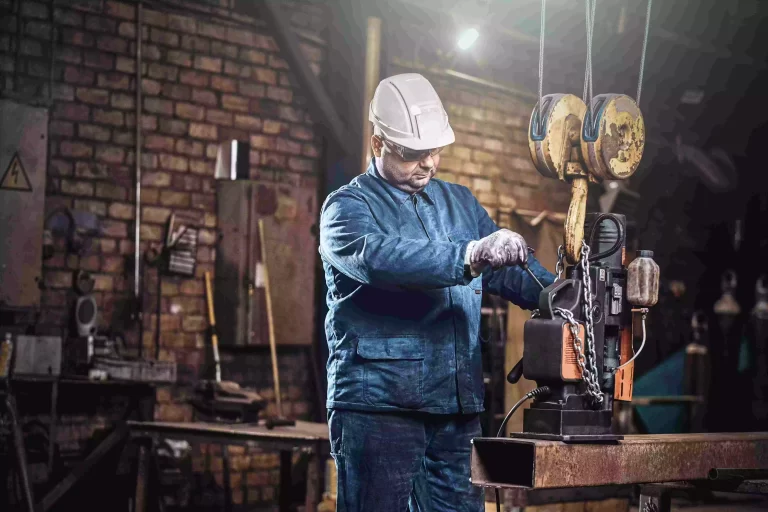Introduction
A chain hoist, whether manual or powered, is a fundamental tool in lifting operations across various industries—from construction and manufacturing to logistics and shipbuilding. At the core of its function lies a principle of physics known as mechanical advantage. This concept enables users to lift heavy loads with relatively minimal effort. However, this advantage also comes with trade-offs, primarily in speed of operation and load capacity.
Understanding how mechanical advantage affects the efficiency of a chain hoist is crucial for operators, engineers, and procurement decision-makers. This article explores the core mechanics, evaluates the trade-offs, and discusses how to optimize chain hoist usage for different application scenarios.
1. What Is Mechanical Advantage?
Mechanical advantage (MA) refers to the ratio of the output force produced by a machine to the input force applied. In simpler terms, it allows a person to lift heavier loads than they could with just raw strength.
In a chain hoist, the mechanical advantage is achieved through a combination of:
- Load chain and hand chain gears
- Sprockets and pulleys
- Gear reduction systems
For example, a chain hoist with a 5:1 mechanical advantage means the force applied is multiplied five times, allowing a user to lift a 500 kg load with just 100 kg of effort (neglecting friction and losses for simplicity).
2. Components That Create Mechanical Advantage
To better understand how a chain hoist achieves mechanical advantage, it’s essential to break down its internal components:
- Hand Chain Wheel: The operator pulls this manually (in manual hoists), initiating the gear mechanism.
- Gear Train: Converts the rotational force from the hand chain into a slower, more powerful torque that moves the load chain.
- Load Chain Wheel (or Load Sprocket): This engages the load chain and lifts the load.
- Load Chain: Bears the actual load and is generally made of high-tensile alloy steel.
Each gear stage reduces speed and increases torque, compounding the mechanical advantage.
3. Efficiency of a Chain Hoist
The efficiency of a chain hoist refers to how much of the input force is effectively converted into useful lifting force, minus losses due to:
- Friction
- Heat
- Wear on mechanical components
- Slack or stretch in the chain
While the theoretical mechanical advantage might be 10:1, real-world efficiency might reduce this to an effective 8:1, depending on maintenance and quality.
4. Trade-Off: Effort vs. Speed
One of the most significant trade-offs in chain hoist operation is between effort required and lifting speed.
- High Mechanical Advantage (HMA): Less force required to lift, but slower operation.
- Low Mechanical Advantage (LMA): More force required, but faster lifting.
For example, a 10:1 MA hoist might require only 50 N to lift a 500 N load but may take 1 minute to raise it a meter. In contrast, a 4:1 MA hoist might do the same in 30 seconds but need 125 N of force.
Use-Case Examples:
- Precision Assembly: Slow, controlled lifting is preferred → HMA is ideal.
- Quick Load/Unload Operations: Speed matters more than effort → LMA may be more efficient.
5. Trade-Off: Effort vs. Load Capacity
Another critical balance is between effort and load capacity:
- Higher mechanical advantage allows the lifting of heavier loads with less input force.
- However, increasing the load capacity through MA often means more complex and bulkier gear trains.
For instance, a hoist rated at 3 tons with a 15:1 gear ratio may only need modest manual effort but becomes heavier and costlier.
6. Powered Chain Hoists and Efficiency
In electric or pneumatic chain hoists, the operator’s effort is replaced by a motor. Here, efficiency becomes a question of power usage versus lifting capability.
- Gear ratio selection in powered hoists still influences speed and energy consumption.
- Over-sized motors may consume more energy than necessary if MA isn’t optimized.
- Modern electric chain hoists use inverter drives and load-sensing controls to balance MA dynamically.
7. The Role of Friction and Real-World Losses
While theoretical MA might look good on paper, practical usage sees performance drop due to:
- Bearing friction
- Chain articulation friction
- Gear backlash
- Lack of lubrication
These losses may reduce actual lifting efficiency by up to 30%, especially in poorly maintained equipment.
Maintenance Tip:
Regular lubrication and gear inspection can restore close-to-optimal performance, maintaining higher real-world mechanical advantage and minimizing wasted effort.
8. Selecting the Right Mechanical Advantage
When selecting a chain hoist, it’s vital to assess:
- Load Weight
- Frequency of Use
- Desired lifting speed
- Available power source (manual vs electric)
- Operator strength (for manual hoists)
Recommended Guidelines:
| Application Type | Recommended MA | Justification |
|---|---|---|
| Light workshop use | 4:1 to 6:1 | Balance of speed and ease |
| Heavy-duty industrial | 8:1 to 15:1 | Prioritizes safe handling of loads |
| Precision positioning | 10:1 or more | Enables fine control of movement |
| Frequent fast lifting | 4:1 | Reduces operation time |
9. Human Factors and Ergonomics
In manual chain hoists, user fatigue is a concern. A hoist with low MA might be faster but tires the user quickly. Conversely, high-MA hoists reduce physical strain but extend task duration.
Modern design trends focus on:
- Bi-directional gear mechanisms for smooth motion
- Ball bearings to reduce friction
- Ergonomic hand chains with anti-slip designs
These factors indirectly affect the usable mechanical advantage by reducing operator discomfort and effort loss.
10. Safety Considerations
Mechanical advantage also plays a safety role:
- A hoist with the proper MA can prevent overload accidents, as users can only apply limited force.
- In contrast, low-MA hoists make it easier to unintentionally strain or damage components if operated improperly.
Additionally, braking mechanisms must be capable of holding the load even under reduced effort conditions enabled by a high MA system.
11. Innovations in Mechanical Advantage Systems
Advanced chain hoists are incorporating:
- Self-adjusting gear trains
- AI-based load sensing
- Electronic feedback loops to modify torque automatically
These innovations aim to optimize mechanical advantage in real time, maximizing both efficiency and safety.
12. Conclusion
The mechanical advantage in a chain hoist is a powerful concept that fundamentally influences its efficiency, ease of use, lifting speed, and load-bearing capability. While higher mechanical advantage reduces physical strain and increases lifting capacity, it often slows down the process. Therefore, understanding and optimizing the trade-offs between effort, speed, and load capacity is key to efficient and safe lifting operations.
Whether selecting a manual hoist for a small workshop or a motorized unit for industrial use, recognizing how mechanical advantage impacts overall performance enables smarter decisions. As technology evolves, the future may bring adaptive systems that dynamically balance these factors, further improving the versatility and reliability of chain hoists in every sector.


